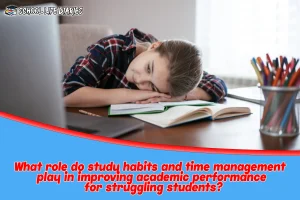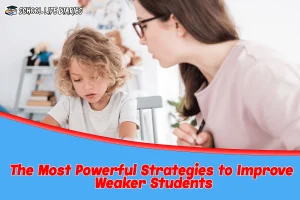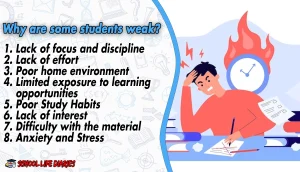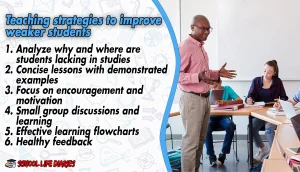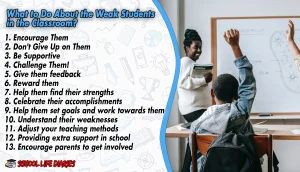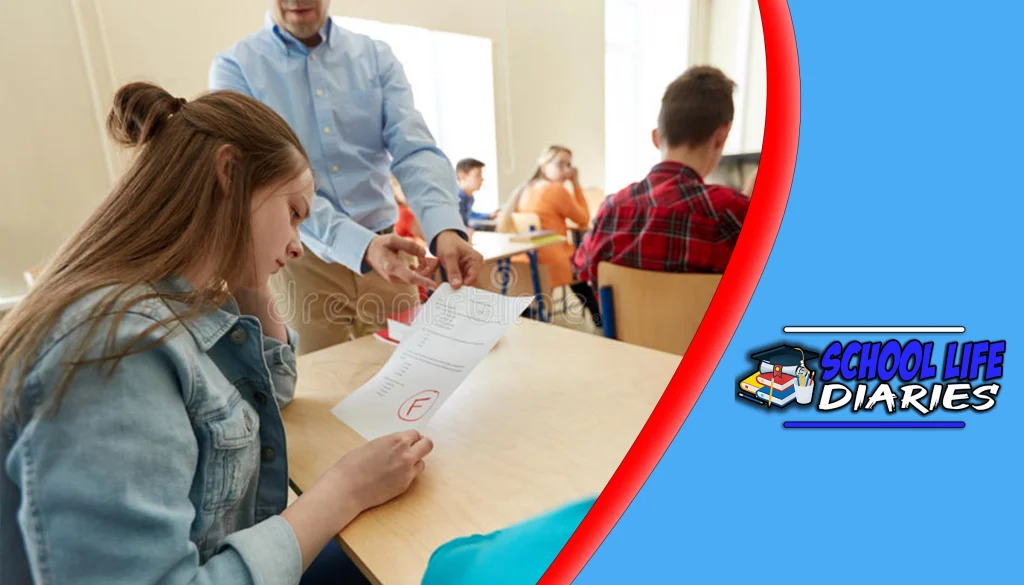This article aims to explore various approaches that can be used to improve the academic performance of weak students, focusing on study habits, time management, peer tutoring programs, teaching strategies, and classroom interventions.
When it comes to improving the academic performance of weak students, study habits and time management play a crucial role. Developing effective study habits such as creating a conducive learning environment, setting specific goals, and implementing structured study schedules can significantly enhance their ability to absorb and retain information.
What role do study habits and time management play in improving academic performance for struggling students?
Study habits and effective time management are crucial factors in enhancing the academic performance of struggling students. Developing good study habits involves creating a structured routine that allows for focused learning and retention of information. This includes setting specific goals, organizing study materials, and allocating dedicated time for studying.
Time management is equally important as it helps students allocate their limited time effectively. Struggling students often face numerous academic challenges, such as difficulty understanding concepts or completing assignments on time.
Study habits and effective time management are vital components in improving the academic performance of struggling students. By cultivating good study habits through goal-setting and organization while managing their time efficiently, these students can overcome obstacles and achieve success academically.
What are the benefits of implementing peer tutoring programs to enhance academic performance?
Implementing peer tutoring programs has been shown to foster a sense of camaraderie among learners, encouraging them to form meaningful connections and develop a supportive community that facilitates educational growth. Peer tutoring involves pairing academically stronger students with weaker ones, allowing for the exchange of knowledge and skills in a collaborative setting.
One major benefit of peer tutoring is its ability to enhance collaboration among students. When engaging in peer tutoring sessions, students are encouraged to work together towards a common goal – improving academic performance. This collaborative effort promotes teamwork and cooperation, as students learn how to effectively communicate ideas, share resources, and solve problems collectively.
The Most Powerful Strategies to Improve Weaker Students
One of the most effective methods for enhancing the educational capabilities of struggling learners involves implementing various instructional strategies that cater to their specific needs and promote academic growth. Techniques such as creating a conducive learning environment, fostering academic motivation, promoting student engagement, and providing personalized instruction can significantly impact the educational outcomes of these students.
To begin with, creating a supportive and engaging learning environment is crucial for weaker students. This can be achieved by ensuring that classrooms are well-organized, comfortable, and free from distractions. Additionally, incorporating visual aids, interactive activities, and technology into lessons can enhance student engagement and make learning more enjoyable for struggling learners.
What is a Weak Student?
A weak student can be described as an individual who struggles to meet the expected learning outcomes and may require additional support and intervention. These students often face challenges in various areas, such as study habits, time management, lack of focus, and discipline. Study habits play a crucial role in academic performance.
Time management is another critical factor that affects the academic performance of weak students. They often struggle with managing their time efficiently, leading to inadequate preparation for exams and assignments. Poor time management skills can result in cramming, procrastination, and a disorganized approach to studying. As a result, these students may find it challenging to retain information effectively or complete tasks within given deadlines. Peer tutoring programs can greatly benefit weak students by providing them with additional support from their peers who excel academically.
Why are some students weak?
This paragraph discusses the reasons why some students may be considered weak.
Lack of focus and discipline:
The lack of focus and discipline among weak students can be attributed to a multitude of factors, including external distractions and a disorganized study routine. Students who struggle academically often find it challenging to adopt effective study techniques and manage their time efficiently. One key factor contributing to the lack of focus among weak students is the presence of external distractions. In today’s digital age, technology has become both a blessing and a curse for students.
To combat this issue, weak students can benefit from implementing effective time management techniques such as setting specific study schedules and using productivity tools that block access to distracting websites during designated study periods.
Lack of effort:
Insufficient dedication and commitment are often evident among students who struggle academically, hindering their ability to achieve desired outcomes. One of the main factors contributing to this lack of effort is a lack of motivation. Weak students may not see the value or relevance of their studies, which leads to a disinterest in putting in the necessary effort.
Many struggling learners simply do not know how to effectively study or retain information. Educators can provide guidance on note-taking strategies, active reading techniques, and mnemonic devices that aid in memory recall. Teachers can teach them organizational skills and assist them in creating realistic schedules that allow for adequate study time while balancing other commitments.
Poor home environment
A poor home environment often means a lack of resources and support that are essential for academic success. Students from such environments may struggle with access to basic educational materials, like textbooks and study resources, which can hinder their learning process.
The lack of resources in a poor home environment has a direct correlation with a student’s overall academic performance. Without the necessary tools and materials, students may find it difficult to complete assignments or engage fully in classroom activities.
Limited exposure to learning opportunities
Limited exposure to learning opportunities is another significant factor contributing to the poor academic performance of weak students. Many students from disadvantaged backgrounds do not have access to educational resources outside of school, which can widen the gap between their learning abilities and those of their peers. This lack of exposure further exacerbates educational inequalities and prevents these students from reaching their full potential.
Limited exposure to learning opportunities significantly hampers the academic performance of weak students by perpetuating educational inequalities. Implementing peer mentoring programs and providing targeted academic interventions are effective strategies that can help address this challenge. By equipping weak students with necessary resources and personalized support, we can empower them to overcome barriers and unlock their full potential in academics.
Poor Study Habits
Inadequate study habits can hinder students from achieving their full potential and contribute to their underperformance in academics. Effective study techniques are crucial for students to optimize their learning experience and improve their academic performance.
One important aspect of effective studying is time management. Students who lack proper time management skills often find themselves overwhelmed with the amount of work they need to complete, leading to procrastination and last-minute cramming. By developing a study schedule and allocating specific time slots for different subjects or tasks, students can better manage their time and ensure that they have sufficient dedicated study hours.
Lack of interest
One of the main challenges in improving academic performance among weak students is addressing their lack of interest in the subject matter. It is common for students who struggle academically to become disinterested or apathetic about their studies, leading to a lack of motivation and engagement. This lack of interest can be detrimental to their learning experience and hinder their ability to improve their academic performance.
Difficulty with the material
When students struggle with the material, they may become disengaged and lose motivation to continue learning. One challenge that weak students encounter is understanding complex concepts. Teachers can break down the material into smaller, more manageable parts and provide clear explanations using relatable examples. Visual aids such as diagrams or charts can also be used to enhance comprehension.
Difficulty with the material presents a significant challenge for weak students in improving their academic performance. By employing various strategies and techniques such as breaking down complex concepts, incorporating visual aids, promoting interactive activities, providing additional resources, and implementing differentiated instruction approaches like peer tutoring programs; educators can help these struggling learners overcome obstacles and achieve academic success.
Anxiety and Stress
The presence of anxiety and stress can significantly hinder students’ ability to effectively engage with the material and impede their learning progress. When students are overwhelmed by anxiety, it becomes difficult for them to focus on the task at hand and absorb the information being presented. This can lead to poor retention of knowledge and a decrease in academic performance. By providing the necessary resources for emotional well-being alongside academic support systems, schools create an environment where all students have the opportunity to thrive academically despite their initial difficulties with the material.
Teaching strategies to improve weaker students
This discussion will focus on teaching strategies to improve weaker students.
Analyze why and where are students lacking in studies
Analyzing the reasons behind and identifying the areas where students are lacking in their studies can provide valuable insights for improving academic performance. By examining study habits, time management skills, peer tutoring opportunities, teaching strategies, and classroom support, educators can gain a deeper understanding of the specific challenges that weaker students face.
Time management is another crucial aspect to consider. Weak students may struggle with managing their time effectively, resulting in inadequate preparation for exams or incomplete assignments.
Concise lessons with demonstrated examples
Concise instruction involves presenting information in a simplified manner, focusing on the essential elements necessary for understanding a particular topic. By breaking down complex ideas into manageable parts, students are provided with a solid foundation upon which they can build their knowledge.
These demonstrations allow students to witness firsthand how concepts are applied in real-life scenarios or through visual aids. Such engagement stimulates their cognitive processes and enables them to make connections between theory and practice. By offering immediate feedback on their performance, students can identify areas where they may be lacking and focus on improving those specific skills.
Focus on encouragement and motivation
Encouragement and motivation are essential factors to consider in fostering a positive learning environment for students. An encouraging mindset helps weak students overcome their academic challenges by creating a supportive atmosphere that promotes growth and development. Motivational techniques, such as providing constructive feedback and recognizing small achievements, can inspire students to believe in their abilities and strive for improvement.
Positive reinforcement plays a crucial role in motivating weak students. By acknowledging their efforts and progress, teachers can boost their self-esteem and foster self-belief. This can be done through verbal praise, rewards, or certificates of achievement.
Small group discussions and learning
Small group discussions and learning can enhance the educational experience for students by promoting active engagement and collaborative problem-solving. In small group dynamics, students have the opportunity to work closely with their peers and actively participate in interactive discussions. This fosters a sense of community and encourages students to take ownership of their learning.
In small group discussions, peer-to-peer learning becomes an integral part of the academic process. Students not only gain knowledge from their teachers but also learn from each other through active participation in discussions. This promotes a deeper understanding of the subject matter as they engage in meaningful conversations and exchange ideas. By listening to diverse opinions and challenging their own beliefs, students broaden their horizons and develop a more comprehensive understanding of the topic at hand.
Effective learning flowcharts
Effective learning flowcharts provide a structured framework for personalized learning, allowing weak students to navigate through their course material in a systematic manner. These flowcharts outline the key concepts and topics that need to be covered, along with suggested resources and activities for each stage of the learning process. By following these visual aids, students are able to plan their study time effectively and gain a clearer understanding of the subject matter.
This self-awareness empowers them with a sense of ownership over their education and fosters a growth mindset. The visual representation of the course material allows them to easily grasp complex concepts and navigate through different stages of knowledge acquisition at their own pace.
Healthy feedback
Healthy feedback plays a crucial role in fostering a constructive learning environment and facilitating the growth of learners. When it comes to improving the academic performance of weak students, providing healthy feedback becomes even more important. Healthy feedback is characterized by being specific, constructive, and focused on the student’s progress rather than their shortcomings.
To provide healthy feedback, teachers can employ various teaching strategies. One effective strategy is to use a strengths-based approach, which focuses on identifying and building upon the student’s existing skills and abilities. This approach helps weak students develop confidence in their abilities and encourages them to strive for further improvement.
What to Do About the Weak Students in the Classroom?
This discussion focuses on what can be done about weak students in the classroom. One important approach is to encourage them, providing positive reinforcement and support to help build their confidence and motivation. It is crucial not to give up on these students, as they may require more time and assistance to understand concepts and improve academically.
Encourage Them
Encouragement techniques play a crucial role in boosting their confidence and building self-esteem. By providing positive feedback and acknowledging their efforts, teachers can create an environment where these students feel valued and supported. Creating a positive learning environment is also essential in encouraging weak students. Teachers should strive to cultivate a classroom atmosphere that promotes inclusivity, respect, and collaboration among all students.
Encouraging weak students through various techniques such as building self-esteem, personalized learning plans, developing study routines, and creating a positive learning environment is crucial for improving their academic performance.
Don’t Give Up on Them
Persisting in supporting struggling students is crucial for their growth and success, as it ensures that they are not left behind and provides them with the opportunity to thrive academically. It is easy to become discouraged when faced with a student who consistently struggles in their academic performance. This may involve identifying their strengths and weaknesses and creating personalized learning plans that address their areas of improvement.
It is essential for educators and mentors alike to recognize that every student has the potential for growth, regardless of their initial performance level. With consistent support and belief in their abilities, weak students can overcome obstacles and achieve academic success.
Be Supportive
Supportive educators and mentors play a crucial role in improving the academic performance of weak students. By being patient and understanding, they create an environment that fosters growth and success for struggling students.
These educators recognize that every student has unique learning needs and challenges, and they are committed to addressing them effectively. They provide resources such as additional study materials or tutoring sessions to help these students catch up with their peers. Through their dedication and commitment towards these students’ progress, they empower them to overcome obstacles and achieve their full potential academically.
Challenge Them!
Challenging struggling learners can stimulate their intellectual growth and foster a deeper understanding of the subject matter. One effective approach to achieve this is through challenge-based learning. This approach encourages them to explore different strategies, think creatively, and develop resilience when faced with obstacles.
Challenging struggling learners through challenge-based learning, personalized instruction, problem-solving approaches, differentiated teaching techniques, and experiential learning can significantly improve their academic performance. It empowers these students by fostering a deeper understanding of the subject matter while simultaneously enhancing critical thinking skills and promoting a love for lifelong learning.
Give them feedback
Providing constructive feedback is a crucial element in promoting the growth and development of struggling learners. Continuous assessment allows teachers to monitor the progress of weak students and provide timely feedback that focuses on both their strengths and areas for improvement. It is important to emphasize specific examples of both correct and incorrect work, allowing students to understand precisely what they have done well and where they can make necessary adjustments.
Giving constructive feedback is essential for improving the academic performance of weak students. This approach not only helps students identify their areas for improvement but also motivates them to strive for excellence in their studies.
Reward them
Incentivizing struggling learners through rewards can serve as a motivating factor in their educational journey. Implementing a reward system that offers positive reinforcement can create a sense of achievement and encourage weak students to strive for improvement.
This program could involve publicly acknowledging their accomplishments through certificates or awards, providing them with opportunities for leadership roles or special privileges within the school community.
Help them find their strengths
Discovering and nurturing the unique strengths of struggling learners can contribute to their growth and development in the educational realm. By finding strengths, educators can build confidence in these students and provide them with a personalized approach to learning. One way to help struggling students find their strengths is through individualized learning plans.
These plans take into account each student’s specific needs, interests, and learning styles. By tailoring instruction to their strengths, educators can ignite a passion for learning and encourage active participation in the classroom.
Celebrate their accomplishments
By celebrating the accomplishments of struggling learners, educators can create a supportive and uplifting learning environment that motivates students to continue striving for success. Implementing effective celebration techniques is crucial in recognizing the achievements of weak students. Positive reinforcement plays a significant role in building confidence and fostering self-esteem among these learners.
One way educators can celebrate the accomplishments of struggling students is by publicly acknowledging their achievements. This can be done through various means such as verbally praising them in front of their peers or displaying their work in prominent areas of the classroom. By doing so, not only are these students recognized for their efforts, but they also serve as inspiration for others who may be facing similar challenges.
Help them set goals and work towards them
Facilitating the process of goal-setting and progress towards those goals is crucial in supporting struggling learners on their educational journey. Setting goals allows students to have a clear direction and purpose, providing them with a sense of motivation and focus.
This tracking process can be done through various means such as regular assessments or check-ins with teachers or mentors. Providing personalized feedback based on these assessments can help weak students understand their strengths and weaknesses, allowing them to make necessary adjustments in their learning strategies.
Understand their weaknesses
Understanding the areas in which students struggle is essential for effectively supporting their educational development. By understanding weaknesses, educators can identify the specific challenges that hinder a student’s academic performance. This knowledge allows them to design a personalized approach that includes targeted interventions and individualized support.
Understanding the weaknesses of weak students is vital for enhancing their academic performance. This understanding enables educators to develop personalized approaches that incorporate targeted interventions and individualized support. By adopting this approach, educators can effectively assist weak students in overcoming their challenges and achieving success academically.
Adjust your teaching methods
Adapting instructional strategies to cater to diverse learning styles and preferences is crucial for creating an engaging and effective classroom environment. When it comes to improving the academic performance of weak students, one important aspect is adjusting teaching methods to meet their individual needs. This involves implementing various adjustment techniques and teaching strategies that promote student engagement and create a conducive learning environment.
Employing adjustment techniques such as incorporating various instructional approaches and offering individualized instruction helps create an inclusive learning environment where all students have the opportunity to succeed.
Providing extra support in school
Providing additional resources and assistance within the school setting can greatly enhance the support available for students who require extra help. Extra support can come in various forms, such as academic coaching, individualized attention, academic interventions, and personalized learning. These additional resources aim to provide targeted assistance to weak students by addressing their specific needs.
Encourage parents to get involved
Encouraging parental involvement in their child’s education can greatly enhance the overall support system available for students who require additional assistance. When parents take an active role in their child’s academic journey, it creates a strong foundation of support and motivation.
One way to promote parental involvement is by fostering open lines of communication between parents and teachers. Regular parent-teacher meetings or conferences can provide an opportunity for parents to gain insights into their child’s progress, strengths, and areas that need improvement. This exchange of information allows parents to better understand their child’s educational needs and work collaboratively with teachers to address any challenges.
Conclusion: Improve Academic Performance
In conclusion, study habits and time management are crucial factors in improving the academic performance of struggling students. By developing effective study routines and learning how to manage their time wisely, weak students can enhance their understanding and retention of course material.
It is important to recognize that weak students are not inherently incapable or unintelligent; they simply require different teaching strategies to help them succeed. By employing various teaching techniques such as differentiated instruction, visual aids, and hands-on activities, educators can cater to the diverse learning needs of weaker students and facilitate their progress.


